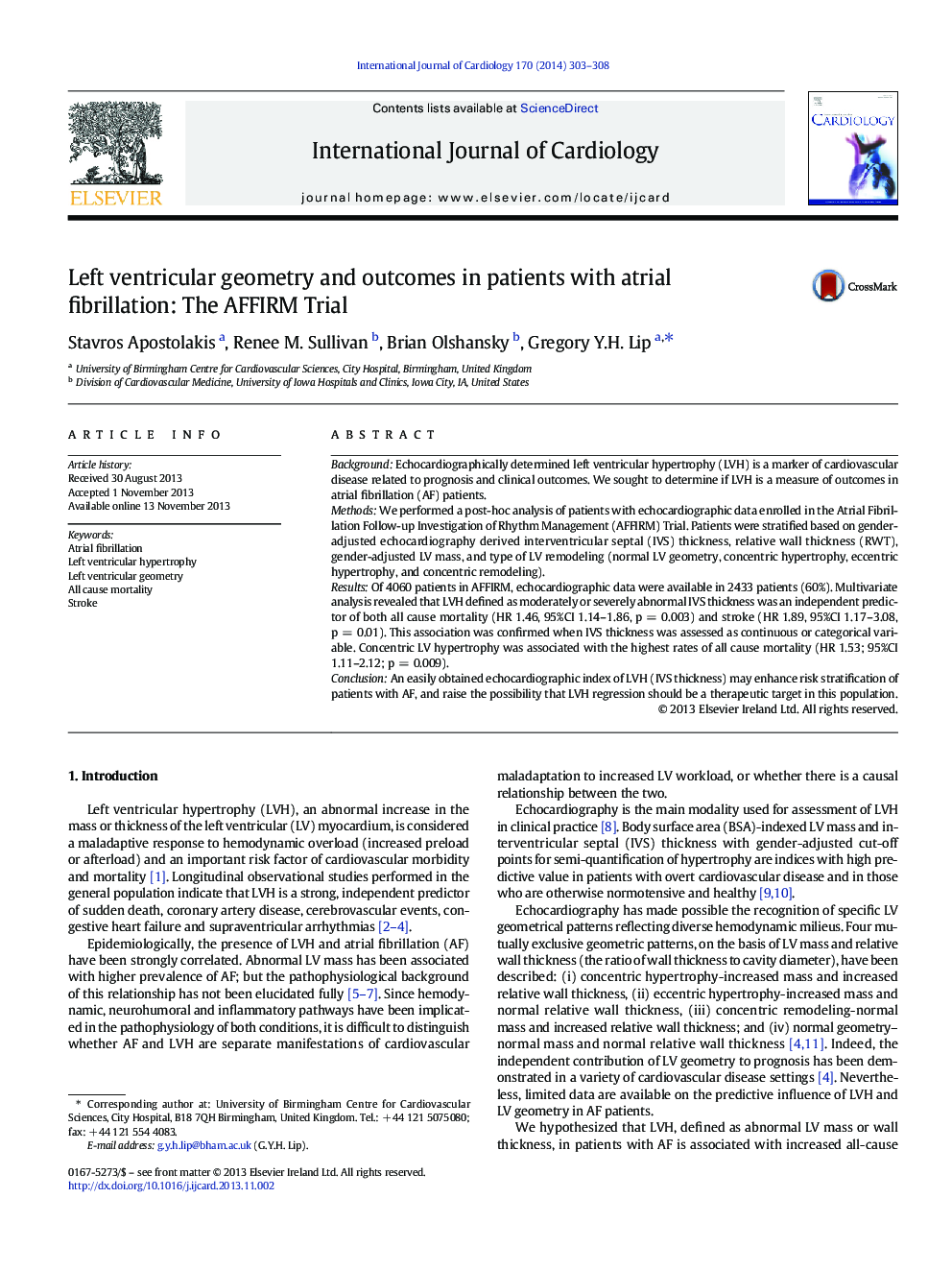| Article ID | Journal | Published Year | Pages | File Type |
|---|---|---|---|---|
| 5973036 | International Journal of Cardiology | 2014 | 6 Pages |
BackgroundEchocardiographically determined left ventricular hypertrophy (LVH) is a marker of cardiovascular disease related to prognosis and clinical outcomes. We sought to determine if LVH is a measure of outcomes in atrial fibrillation (AF) patients.MethodsWe performed a post-hoc analysis of patients with echocardiographic data enrolled in the Atrial Fibrillation Follow-up Investigation of Rhythm Management (AFFIRM) Trial. Patients were stratified based on gender-adjusted echocardiography derived interventricular septal (IVS) thickness, relative wall thickness (RWT), gender-adjusted LV mass, and type of LV remodeling (normal LV geometry, concentric hypertrophy, eccentric hypertrophy, and concentric remodeling).ResultsOf 4060 patients in AFFIRM, echocardiographic data were available in 2433 patients (60%). Multivariate analysis revealed that LVH defined as moderately or severely abnormal IVS thickness was an independent predictor of both all cause mortality (HR 1.46, 95%CI 1.14-1.86, p = 0.003) and stroke (HR 1.89, 95%CI 1.17-3.08, p = 0.01). This association was confirmed when IVS thickness was assessed as continuous or categorical variable. Concentric LV hypertrophy was associated with the highest rates of all cause mortality (HR 1.53; 95%CI 1.11-2.12; p = 0.009).ConclusionAn easily obtained echocardiographic index of LVH (IVS thickness) may enhance risk stratification of patients with AF, and raise the possibility that LVH regression should be a therapeutic target in this population.
